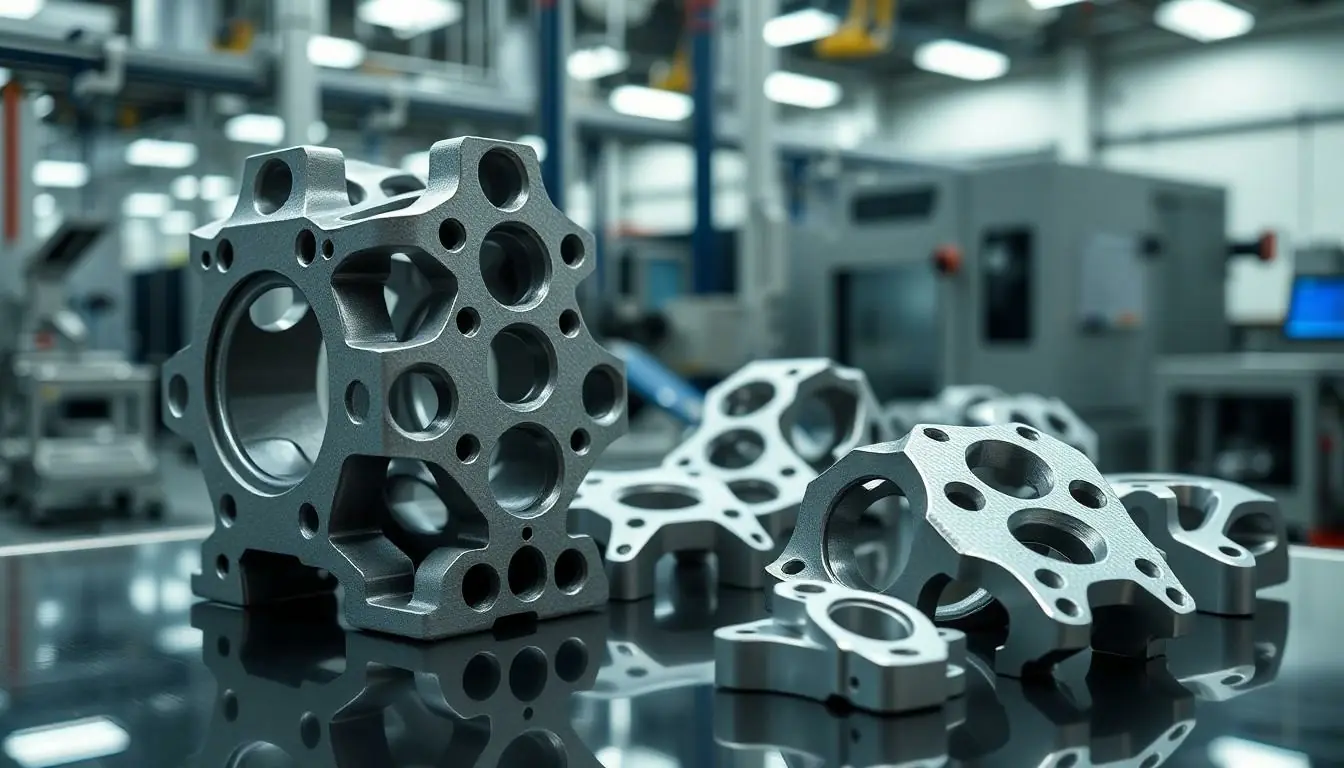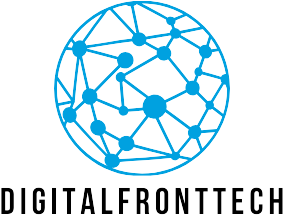Table of Contents
ToggleIn a world where everything seems to be made of plastic, aluminum is the cool kid on the block, strutting its stuff with a shiny, lightweight flair. Imagine taking your wildest designs and transforming them into reality, layer by layer, with the magic of 3D printing. This isn’t just for hobbyists anymore; it’s becoming a game-changer for industries looking to innovate and save some serious weight.
3D printing aluminum opens up a treasure trove of possibilities. From aerospace components to automotive parts, it’s like having a magic wand that turns ideas into durable, functional objects. So buckle up and get ready to explore how this cutting-edge technology is reshaping manufacturing and pushing boundaries. Who knew that printing metal could be this exciting?
Overview of 3D Printing Aluminum
3D printing aluminum revolutionizes manufacturing by combining the lightweight properties of aluminum with the design flexibility of additive manufacturing. This process enables industries to produce complex geometries that traditional methods struggle to achieve. Parts made from aluminum exhibit strength and durability, making them ideal for high-performance applications.
Manufacturers utilize various techniques for 3D printing aluminum, including Selective Laser Melting (SLM) and Direct Energy Deposition (DED). SLM involves using a high-powered laser to fuse metal powder layer by layer, while DED introduces metal through a focused energy source, allowing for repair and fabrication of components. Each method offers unique advantages that cater to specific needs in industries such as aerospace, automotive, and healthcare.
Aluminum’s properties enhance the benefits of 3D printing. High thermal conductivity combined with low density contributes to the efficient production of intricate parts. This combination reduces weight without sacrificing performance. Parts often exhibit excellent corrosion resistance, extending the lifespan in demanding environments.
Real-world applications demonstrate the effectiveness of 3D printing aluminum. Aerospace companies have successfully leveraged this technology to create lightweight bracket systems and complex engine components. Automotive manufacturers take advantage of aluminum’s lightweight nature to improve fuel efficiency in vehicles while maintaining structural integrity.
Cost considerations play a significant role in the decision to adopt this technology. Although initial investments in 3D printing equipment can be high, the potential for reduced material waste and shorter lead times often justifies the costs. The ability to produce custom components on-demand further enhances economic efficiency.
3D printing aluminum is shaping the future of manufacturing. As advancements continue, industries are expected to see even greater integration of this innovative technology.
Benefits of 3D Printing Aluminum

3D printing aluminum offers multiple benefits, particularly in industries that value performance and efficiency. Key advantages include lightweight and durable properties, along with enhanced design flexibility.
Lightweight and Durable Properties
Aluminum components produced through 3D printing exhibit remarkable lightweight characteristics. This trait plays a critical role in aerospace and automotive applications. High strength-to-weight ratios ensure that parts resist stress while maintaining low mass. Strength remains consistent, even in challenging environments. Effective thermal conductivity also enhances component performance, making heat dissipation more efficient. Industries benefit from using aluminum due to these factors, which contribute significantly to improving fuel efficiency and overall performance of vehicles and aircraft.
Enhanced Design Flexibility
Advanced 3D printing techniques allow for the creation of complex geometries not achievable with traditional manufacturing methods. Unique shapes and intricate designs become feasible, enabling more innovative solutions. Internal structures can be optimized for functional performance, greatly benefiting high-performance applications. Designers gain freedom to explore unconventional designs that fulfill exact requirements. This flexibility supports rapid prototyping processes, which reduces development time and increases market responsiveness. Overall, enhanced design capabilities facilitate creative engineering, driving innovation in multiple sectors.
Methods of 3D Printing Aluminum
Different methods are used for 3D printing aluminum, each with its own strengths and applications. The most prominent techniques include Powder Bed Fusion and Directed Energy Deposition.
Powder Bed Fusion
Powder Bed Fusion (PBF) employs a laser to melt layers of aluminum powder, fusing them into solid parts. This method produces intricate geometries with high precision, making it ideal for aerospace components. Applications span the production of lightweight brackets and complex heat exchangers. Materials used in this process include aluminum alloys, specifically designed for strength and thermal resistance. Manufacturers benefit from reduced waste since only the required material is melted. The layer-by-layer approach allows for detailed surface finishes and excellent mechanical properties, ensuring parts meet stringent industry standards.
Directed Energy Deposition
Directed Energy Deposition (DED) involves depositing molten aluminum onto a substrate through a focused energy source, typically a laser or electron beam. This method excels in repairing components or adding material to existing parts. DED supports larger builds, which makes it suitable for the aerospace and automotive industries when fabricating larger structures. Materials like aluminum wire are used for efficient deposition. Flexible design capabilities enhance creativity in part design. Manufacturers appreciate the speed of layer consolidation, which benefits rapid production cycles. DED contributes to lightweight structures while maintaining performance, showcasing aluminum’s adaptability in advanced manufacturing.
Applications of 3D Printing Aluminum
3D printing aluminum finds various applications across different industries, leveraging its lightweight and durable nature to enhance performance.
Aerospace Industry
Aerospace companies utilize 3D printing aluminum for creating high-performance components. Lightweight brackets and structural parts are examples of applications where reduced weight leads to improved fuel efficiency. Manufacturers increasingly rely on advanced techniques like Selective Laser Melting (SLM) to produce intricate geometries that traditional methods cannot achieve. These parts not only meet strict industry standards but also exhibit exceptional strength, making them ideal for flight-critical applications. Rapid prototyping capabilities further enable the aerospace sector to innovate swiftly, testing designs and materials efficiently.
Automotive Sector
In the automotive sector, 3D printing aluminum plays a significant role in producing lightweight, fuel-efficient vehicles. Components such as engine parts and transmission housings benefit from the strength-to-weight ratio aluminum offers. Various manufacturers embrace Direct Energy Deposition (DED) for repairing and enhancing existing parts, extending the lifespan of crucial components. Design flexibility allows for the integration of complex internal structures, optimizing performance and reducing overall vehicle weight. Automotive engineers leverage this technology to achieve quicker production cycles and decrease material waste, resulting in cost-effective manufacturing solutions.
Challenges in 3D Printing Aluminum
3D printing aluminum presents unique challenges that need careful consideration. Various factors influence the performance and quality of printed parts.
Material Limitations
Aluminum alloys present specific limitations in 3D printing. Certain alloys can be difficult to work with due to issues like porosity and cracking during solidification. These defects compromise structural integrity and may result in part failure under stress. Additionally, the thermal properties of aluminum affect its response to rapid heating and cooling cycles. Variability in the powder’s characteristics can lead to inconsistent results across different prints. Selecting the right alloy is crucial for achieving the desired mechanical properties, requiring manufacturers to stay informed about the latest advancements in material science.
Process Optimization
Optimizing the 3D printing process enhances the quality of aluminum components. Parameter adjustments, such as laser power and scanning speed, can drastically impact the final product. Fine-tuning these variables helps reduce defects and improve layer adhesion. Post-processing techniques, such as heat treatment, further enhance the mechanical properties of printed parts. Collaboration between engineers and material scientists is essential in determining the most effective strategies for improving process reliability. Implementing these optimizations directly correlates to reduced production costs and increased overall efficiency, making it advantageous for manufacturers in competitive industries.
The future of 3D printing aluminum is undeniably bright. As industries increasingly embrace this technology, the potential for innovation and efficiency continues to grow. Lightweight and durable components are becoming standard, particularly in aerospace and automotive sectors.
Challenges remain but advancements in material science and process optimization are paving the way for improved outcomes. The collaboration between engineers and material scientists is crucial for overcoming these hurdles.
As manufacturers explore the full capabilities of 3D printing aluminum, it’s clear this technology will play a significant role in shaping the future of modern manufacturing. Embracing these developments will not only enhance performance but also drive sustainability in various industries.






